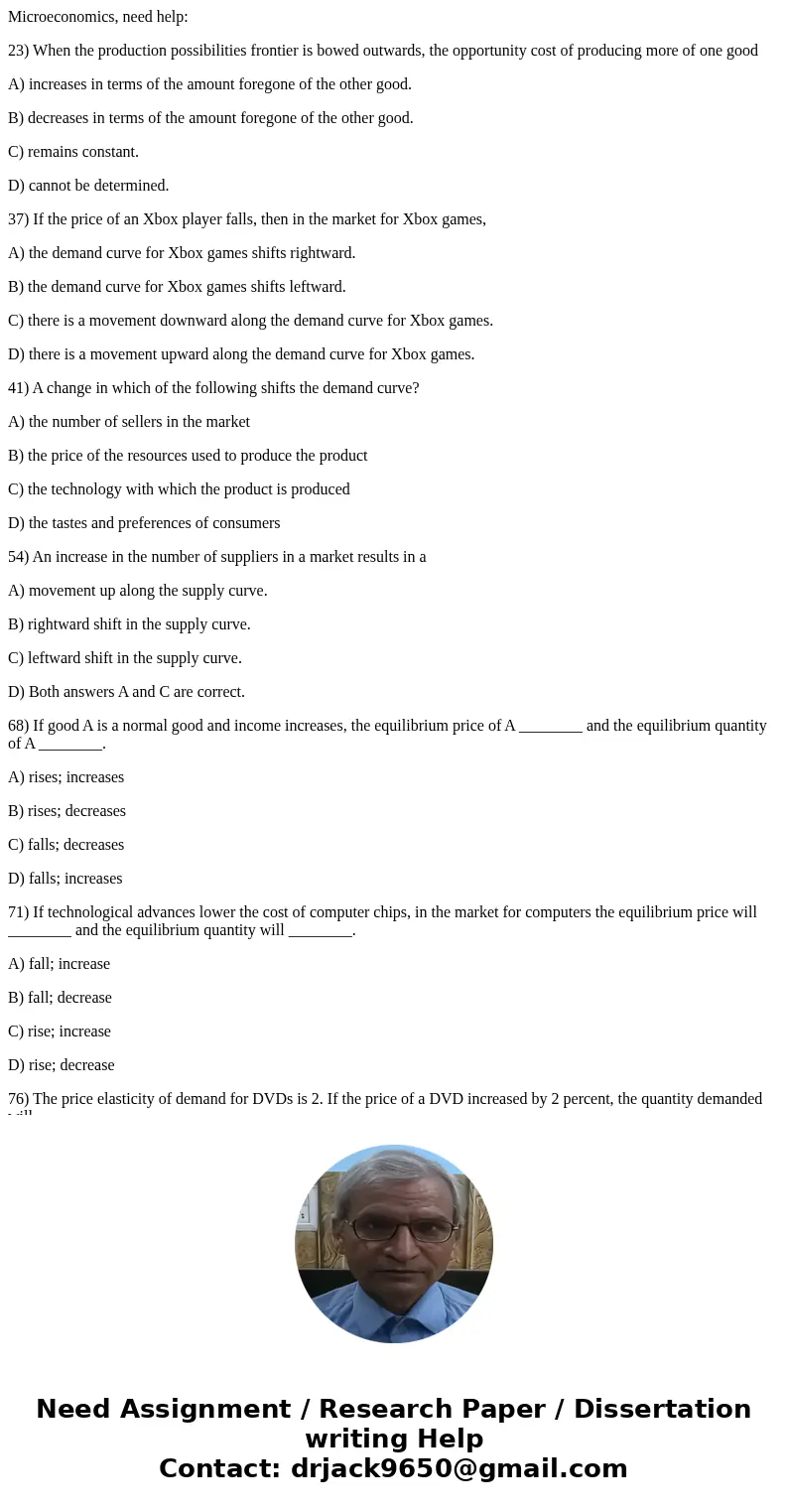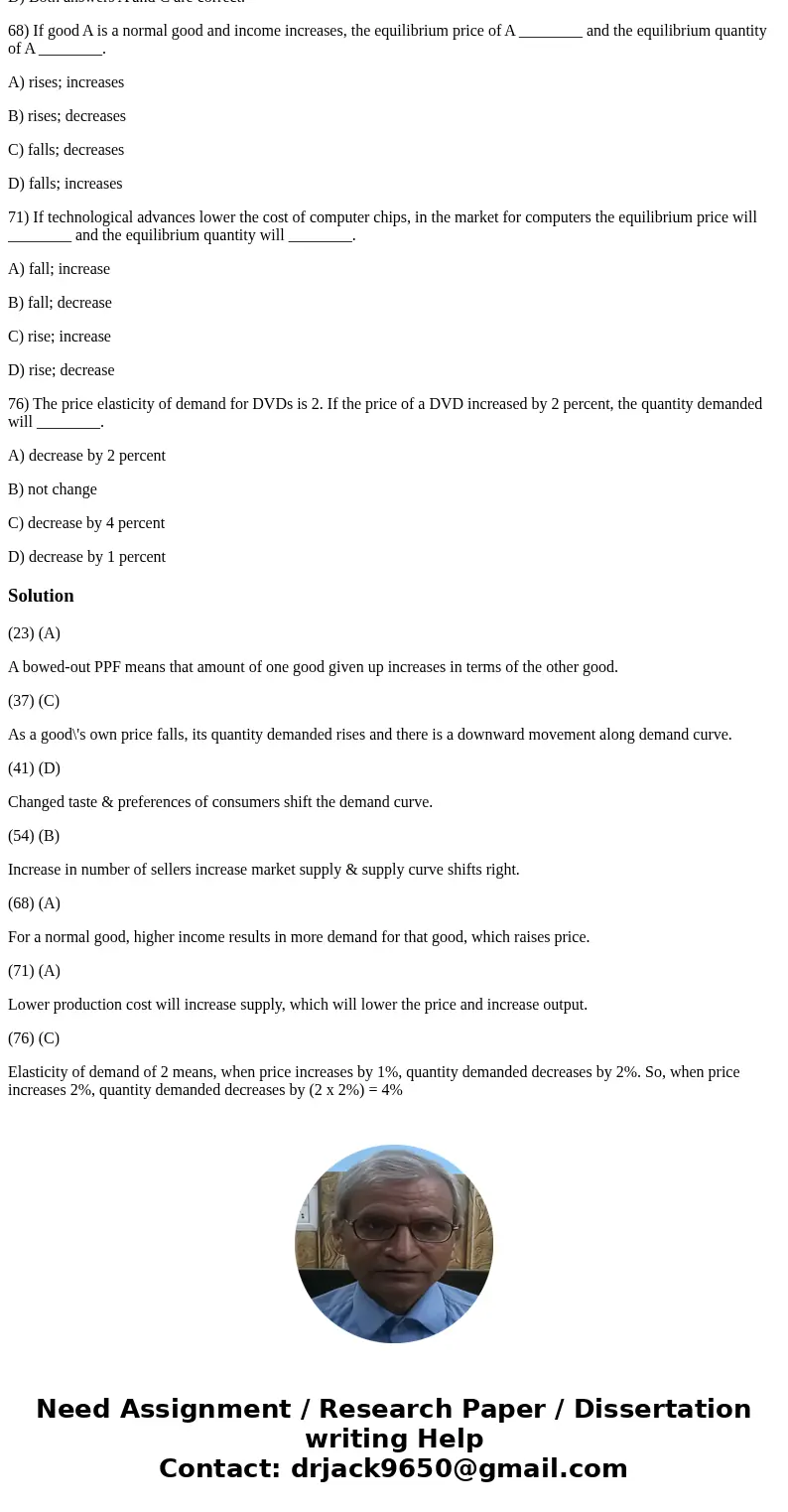Microeconomics need help 23 When the production possibilitie
Microeconomics, need help:
23) When the production possibilities frontier is bowed outwards, the opportunity cost of producing more of one good
A) increases in terms of the amount foregone of the other good.
B) decreases in terms of the amount foregone of the other good.
C) remains constant.
D) cannot be determined.
37) If the price of an Xbox player falls, then in the market for Xbox games,
A) the demand curve for Xbox games shifts rightward.
B) the demand curve for Xbox games shifts leftward.
C) there is a movement downward along the demand curve for Xbox games.
D) there is a movement upward along the demand curve for Xbox games.
41) A change in which of the following shifts the demand curve?
A) the number of sellers in the market
B) the price of the resources used to produce the product
C) the technology with which the product is produced
D) the tastes and preferences of consumers
54) An increase in the number of suppliers in a market results in a
A) movement up along the supply curve.
B) rightward shift in the supply curve.
C) leftward shift in the supply curve.
D) Both answers A and C are correct.
68) If good A is a normal good and income increases, the equilibrium price of A ________ and the equilibrium quantity of A ________.
A) rises; increases
B) rises; decreases
C) falls; decreases
D) falls; increases
71) If technological advances lower the cost of computer chips, in the market for computers the equilibrium price will ________ and the equilibrium quantity will ________.
A) fall; increase
B) fall; decrease
C) rise; increase
D) rise; decrease
76) The price elasticity of demand for DVDs is 2. If the price of a DVD increased by 2 percent, the quantity demanded will ________.
A) decrease by 2 percent
B) not change
C) decrease by 4 percent
D) decrease by 1 percent
Solution
(23) (A)
A bowed-out PPF means that amount of one good given up increases in terms of the other good.
(37) (C)
As a good\'s own price falls, its quantity demanded rises and there is a downward movement along demand curve.
(41) (D)
Changed taste & preferences of consumers shift the demand curve.
(54) (B)
Increase in number of sellers increase market supply & supply curve shifts right.
(68) (A)
For a normal good, higher income results in more demand for that good, which raises price.
(71) (A)
Lower production cost will increase supply, which will lower the price and increase output.
(76) (C)
Elasticity of demand of 2 means, when price increases by 1%, quantity demanded decreases by 2%. So, when price increases 2%, quantity demanded decreases by (2 x 2%) = 4%


 Homework Sourse
Homework Sourse